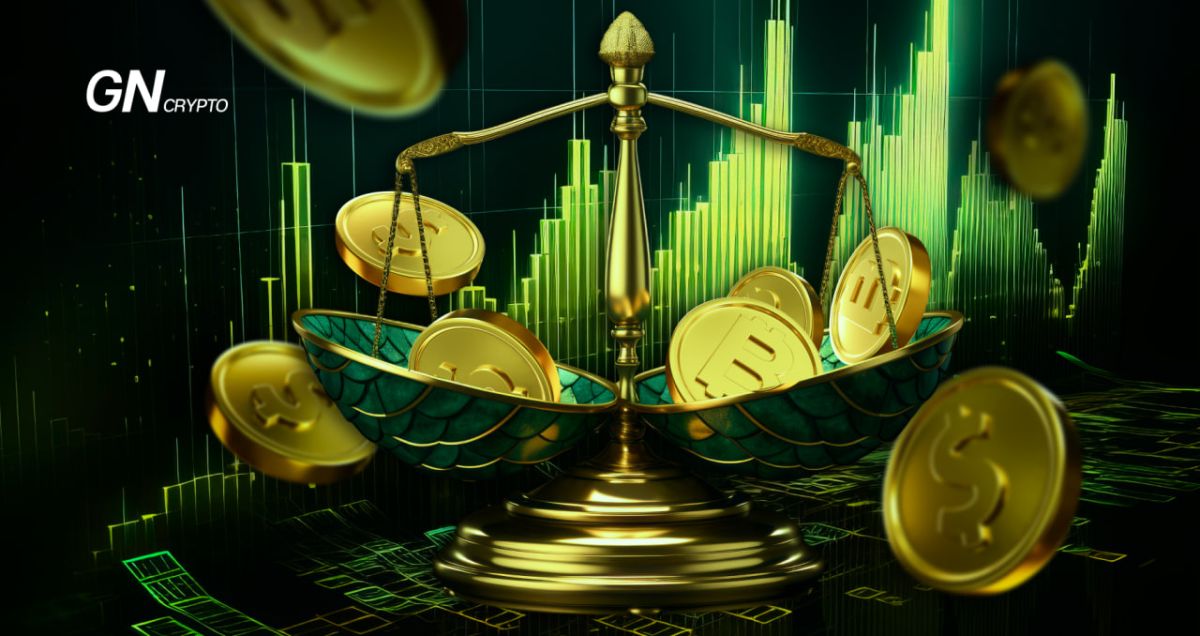What is a Funding Rate and How Does it Work?

The funding rate is a specific fee set by cryptocurrency exchanges to balance the ratio of overall volumes of short and long positions in the perpetual futures market.
On this page
While some may perceive the funding rate as an extra cost for holding a position in the derivatives exchange, it's important to clarify that this is not a fee paid to the exchange. Instead, it is distributed among the traders engaged in futures trading.
Let's take a closer look at funding rates, explore their different types, and grasp their real impact on trading.
Why are funding rates needed?
When it comes to futures contracts, they fall into two categories: fixed-term and perpetual. Fixed-term contracts have a predetermined expiration date, which can be a week, a month, or a quarter, making it relatively easy to align their prices with the underlying asset and ensure ample liquidity.
On the other hand, perpetual contracts tied to an asset remain active until the trader decides to close them or they get liquidated. This setup often leads to a disparity between the number of long (buy) and short (sell) positions held open.
Take Bitcoin (BTC), for instance. If it enters a steep decline, breaking support levels in rapid succession, the majority of traders are likely to short futures contracts, aiming to profit from the downturn. This situation can result in a shortage of liquidity, as buy orders may significantly outnumber sell orders. This is where the funding rate comes into play, serving to bolster liquidity.
The funding rate fluctuates based on the prevailing balance between open long and short positions. If the indicator reads positive, those with long positions contribute to those in short positions. If it reads negative, the roles are reversed.
Key Aspects of the Funding Rate
- The typical funding rate across numerous exchanges stands at 0.01%.
- The funding rate is not confined to any specific numerical boundaries. It can fluctuate under the prevailing market conditions without any upper or lower limits.
- The method of calculating the funding rate varies across different cryptocurrency exchanges. Some might base it on time intervals (for instance, the rate could be applied every hour or every eight hours), while others might calculate it based on the current balance of open positions (meaning that on one platform, the rate could be set at 0.01%, while on another, it could be -0.34%). These discrepancies arise due to the diverse nature of user bases on different platforms (with bulls potentially dominating one platform and bears another), varying fee structures, and other influential factors.
- The funding rate serves as a valuable tool for gauging trader sentiment towards a particular cryptocurrency, aiding in the prediction of the asset’s future movements. As such, it stands as an invaluable indicator in market analysis.
To find the current funding rate, one can refer to the futures terminal of any given exchange. Taking WhiteBIT as an example, the platform initially displays the funding rate, followed by the countdown to its next application:
Funding rate in the futures section of WhiteBIT. Source: whitebit.com
The funding history is public and can be presented either in chart form or as a list:
Funding history for the RNDR perpetual contract. Source: whitebit.com
Tips for Using the Funding Rate
When a trader wishes to maintain a long-term position in the derivatives segment, the funding rate can pose a considerable challenge, gradually depleting the position's margin. Here are some practical tips to navigate this issue:
- Examine the funding history across various exchanges. This approach aids in identifying which platforms exhibit larger or smaller fluctuations in the funding rate for your selected trading pair.
- Utilizing lower leverage results in the funding rate consuming a smaller portion of your funds, measured in dollar equivalent.
- For trades intended to be held over extended periods, such as several months, opting for the margin section instead of futures might prove to be financially more beneficial due to lower fees associated with using margin funds.
A savvy move would also be to analyze the funding rate’s dynamics, keeping in mind the market’s inherent cyclical nature. This knowledge can guide you in determining the most opportune moments to enter or exit trades.
How to Profit from the Funding Rate?
Some traders have devised a specific algorithm that enables them to profit from the accumulation of the funding rate. The process unfolds as follows:
- The trader identifies an asset with a high funding rate, which might be at the level of 1–2%. This usually occurs during periods of substantial market volatility or aggressive upward or downward trends.
- The trader initiates a futures contract within the last 5 seconds before the funding rate is recalculated, and then immediately closes it after the rate has been applied.
- If the cost incurred from opening the position and the asset’s price movement within those crucial 10 seconds is lower than the percentage gained from the funding rate, the trader realizes a profit.
This strategy is inherently risky, but with a meticulous approach, it can yield up to a 5% return daily, contingent on the amount of funds present in the futures account.
Final Words
The funding rate plays a crucial role as a financial instrument, and it is imperative to consider it when initiating positions on a futures platform. When applied with a tested and proven trading strategy, funding rates have the potential to be profitable.
The content on The Coinomist is for informational purposes only and should not be interpreted as financial advice. While we strive to provide accurate and up-to-date information, we do not guarantee the accuracy, completeness, or reliability of any content. Neither we accept liability for any errors or omissions in the information provided or for any financial losses incurred as a result of relying on this information. Actions based on this content are at your own risk. Always do your own research and consult a professional. See our Terms, Privacy Policy, and Disclaimers for more details.



























